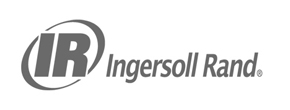Water, the elixir of life, has long been a vital resource, essential for sustenance, sanitation, and industrial processes. However, the landscape of the water industry is undergoing significant transformation driven by a confluence of factors including population growth, climate change, technological advancements, and evolving regulatory frameworks. One Eight looks into the changing marketplace of the water industry, exploring key trends, challenges, and opportunities shaping its future.
Water Scarcity and Quality Concerns: Despite Earth being primarily covered by water, only about 2.5% of it is freshwater, and much of that is inaccessible, locked up in glaciers, ice caps, and underground aquifers. As a result, only a fraction of the Earth’s water resources are available for human consumption, agriculture, industry, and other uses. With burgeoning populations and changing climate patterns, water scarcity has become a pressing global issue. Regions once considered water-rich are facing challenges due to over-extraction, pollution, and inefficient distribution systems. Ensuring access to clean, safe water is paramount for public health and economic development. The advent of advanced technologies such as desalination, water recycling, rainwater recovery and smart water management systems is revolutionising the industry. These innovations are enabling more efficient use of water resources, enhancing treatment processes, and improving infrastructure resilience.
With Stringent environmental regulations and sustainability goals that are driving industry stakeholders to adopt more eco-friendly practices. Companies are increasingly focusing on reducing water consumption, minimizing waste generation, and employing renewable energy sources in water treatment processes. Privatisation and Public-Private Partnerships (PPPs): In response to budgetary constraints and the need for infrastructure upgrades, many municipalities are turning to privatization and PPPs for water management and service delivery. While these models can offer efficiency gains and investment opportunities, they also raise concerns about affordability, accountability, and equity.
Looking at the challenges Facing the Water Industry. Much of the world’s water infrastructure is aging and in need of repair or replacement. Decades of underinvestment have left many systems vulnerable to leaks, breakages, and inefficiencies, compromising service reliability and water quality. Financing large-scale water projects poses a significant challenge for governments and utilities, particularly in developing countries. Limited funding options, competing priorities, and political considerations can hinder investment in critical water infrastructure.
Emerging Contaminants. The presence of emerging contaminants such as pharmaceuticals, microplastics, and industrial chemicals in water sources poses a growing threat to human health and the environment. Addressing these contaminants requires advanced treatment technologies and robust monitoring programs. Climate Change Impacts. Climate change exacerbates water-related challenges by altering precipitation patterns, increasing the frequency of extreme weather events, and intensifying droughts and floods. Adapting to these changes requires proactive measures such as water conservation, infrastructure resilience upgrades, and integrated water resource management.
Opportunities for Innovation and Growth:
Digitalization and Data Analytics: Leveraging digital technologies and data analytics can optimize water management processes, improve asset performance, and enhance decision-making capabilities. Real-time monitoring, predictive analytics, and asset management systems enable proactive maintenance and resource allocation.
Circular Economy Approaches: Adopting circular economy principles can unlock opportunities for resource recovery, wastewater reuse, and sustainable water management practices. By treating wastewater as a valuable resource rather than a disposable waste, companies can reduce costs, conserve water, and minimize environmental impact.
Community Engagement and Education: Engaging communities and raising awareness about water conservation, pollution prevention, and sustainable consumption habits are essential for fostering a culture of water stewardship. Educational initiatives, public outreach campaigns, and participatory planning processes can empower individuals and communities to take action.
Collaborative Partnerships : Collaboration among governments, utilities, NGOs, academia, and the private sector is crucial for addressing complex water challenges holistically. By pooling resources, expertise, and innovation, stakeholders can develop integrated solutions that promote water security, resilience, and equity.
The water industry is at a critical juncture, facing unprecedented challenges and opportunities in an era of rapid change. Addressing water scarcity, ensuring water quality, and building resilient infrastructure require collective action, innovation, and strategic investment. By embracing technological advancements, regulatory reforms, and collaborative approaches, the water industry can navigate the currents of change and pave the way towards a more sustainable and equitable water future for all.
copyright One Eight Filtration . ww.OneEight.ie06753886



















